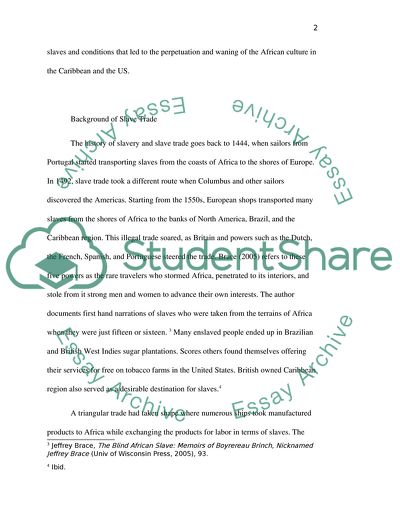Cite this document
(Survival of African Culture through Slavery Term Paper Example | Topics and Well Written Essays - 4500 words, n.d.)
Survival of African Culture through Slavery Term Paper Example | Topics and Well Written Essays - 4500 words. https://studentshare.org/history/1820972-african-culture-surviving-through-slavery-in-the-caribbean-and-the-united-states
Survival of African Culture through Slavery Term Paper Example | Topics and Well Written Essays - 4500 words. https://studentshare.org/history/1820972-african-culture-surviving-through-slavery-in-the-caribbean-and-the-united-states
(Survival of African Culture through Slavery Term Paper Example | Topics and Well Written Essays - 4500 Words)
Survival of African Culture through Slavery Term Paper Example | Topics and Well Written Essays - 4500 Words. https://studentshare.org/history/1820972-african-culture-surviving-through-slavery-in-the-caribbean-and-the-united-states.
Survival of African Culture through Slavery Term Paper Example | Topics and Well Written Essays - 4500 Words. https://studentshare.org/history/1820972-african-culture-surviving-through-slavery-in-the-caribbean-and-the-united-states.
“Survival of African Culture through Slavery Term Paper Example | Topics and Well Written Essays - 4500 Words”. https://studentshare.org/history/1820972-african-culture-surviving-through-slavery-in-the-caribbean-and-the-united-states.


